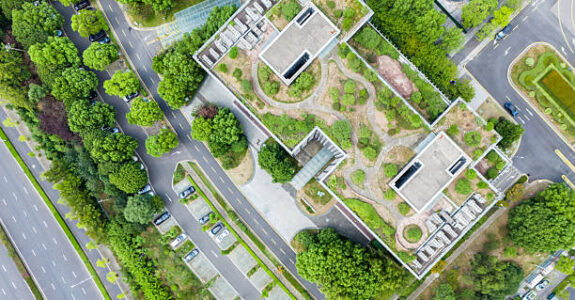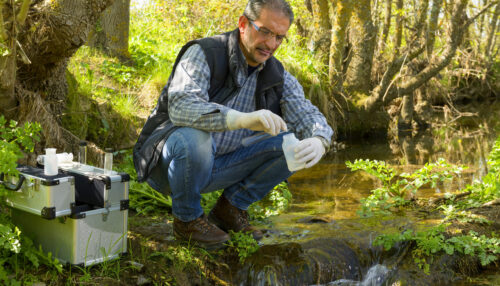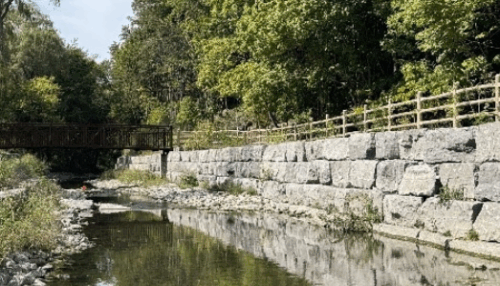
Smarter Stormwater, Stronger Cities
Site strategies for runoff, resilience, and results
November 7, 2025
By: Dan Wright, PE
Urbanization and climate change are reshaping the way our cities grow, creating new opportunities to rethink how we manage stormwater. As runoff volumes rise, so does the chance to design smarter systems that reduce flooding, improve water quality, and protect natural habitats. For developers, municipalities, and environmental professionals, embracing these challenges opens the door to building stronger, more resilient communities.
According to the EPA, urban runoff is one of the leading causes of water pollution in the U.S., impacting over 13% of assessed rivers and streams. With increasing regulatory pressure and public demand for sustainable development, innovative stormwater solutions are no longer optional. They’re essential.
This article explores how we help clients turn their stormwater challenges into opportunities for long-term sustainability, backed by decades of engineering expertise and real-world results.
The Challenge of Stormwater Runoff
Stormwater-runoff volume has risen significantly in the last 100 years due to urbanization and the spread of impervious surfaces. This increased volume can lead to downstream flooding, streambank erosion, habitat damage, combined sewer overflows, and even operational disruptions at manufacturing facilities.
The reduction in natural infiltration means more direct discharges to surface water bodies, creating water-quality issues across all land uses. In response, federal, state, and local governments have adopted stricter stormwater regulations, expanded permit compliance monitoring, and implemented stormwater taxes to fund infrastructure upgrades.

Best Management Practices (BMPs)
Montrose has been a leader and advocate of Best Management Practices—long before they became regulatory standards. Our approach goes beyond conventional engineering controls to incorporate green infrastructure such as permeable pavements, bioswales, rain gardens, and vegetated swales.
We understand that each site is unique. Drawing on our civil engineering and landscape architecture practices, we evaluate every project holistically to find the most appropriate, cost-effective solution. Our goal is to create designs that blend seamlessly into the natural landscape while delivering robust engineering performance.
Stormwater Design in a Corporate Campus Expansion
A standout example of sustainable site development can be seen in a major corporate campus expansion in the Northeast, where our team led key site-related and stormwater design efforts that contributed to LEED® Platinum certification.
Key features included:
A layout
that maximized open space and minimized disturbance of natural features
Green roofs
on multiple buildings, with drainage collected in cisterns for landscape irrigation
Infiltration beds
integrated within a conventional stormwater basin to reduce peak discharge rates and runoff volume
Conversion of lawn
areas to natural meadows to reduce irrigation needs
Geotechnical testing
for a geothermal heating system, supporting overall sustainability goals
This project highlights how thoughtful stormwater design can elevate both environmental performance and architectural excellence.
Creative Stormwater Solutions
Beyond traditional BMPs, we help clients implement advanced techniques like underground cisterns, modular wetlands, and smart monitoring systems. These solutions not only mitigate runoff but also introduce green spaces that enhance property value and community engagement.
For example, porous pavement reduces surface runoff while improving aesthetics and walkability. Rain gardens offer habitat benefits and visual appeal. These features can differentiate projects in competitive markets and foster long-term stakeholder support.
Continue Reading
Proper stormwater management is an issue for every development project. With increasing scrutiny over how stormwater affects a site, our clients face mounting design and compliance costs. As the field evolves, emerging trends like climate-adaptive infrastructure, renewable energy integration, and real-time monitoring will reshape how we manage urban water systems.
 Dan Wright, PE
Dan Wright, PE
Senior Associate Engineer
With over 40 years of experience in civil and environmental engineering, Dan leads multidisciplinary teams focused on sustainable site design, stormwater management, and regulatory compliance. Since Advanced GeoServices joined Montrose in 2018, Dan has played a key role in expanding the firm’s national capabilities while maintaining a strong commitment to innovative, site-specific solutions. His leadership has been instrumental in numerous LEED®-certified developments across the region.




